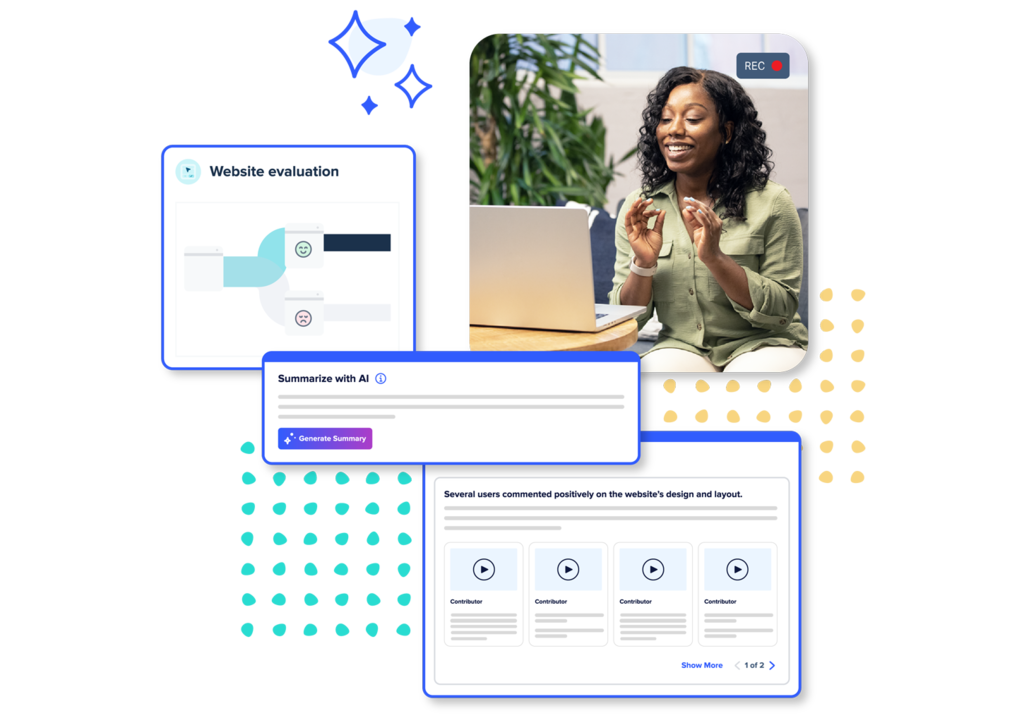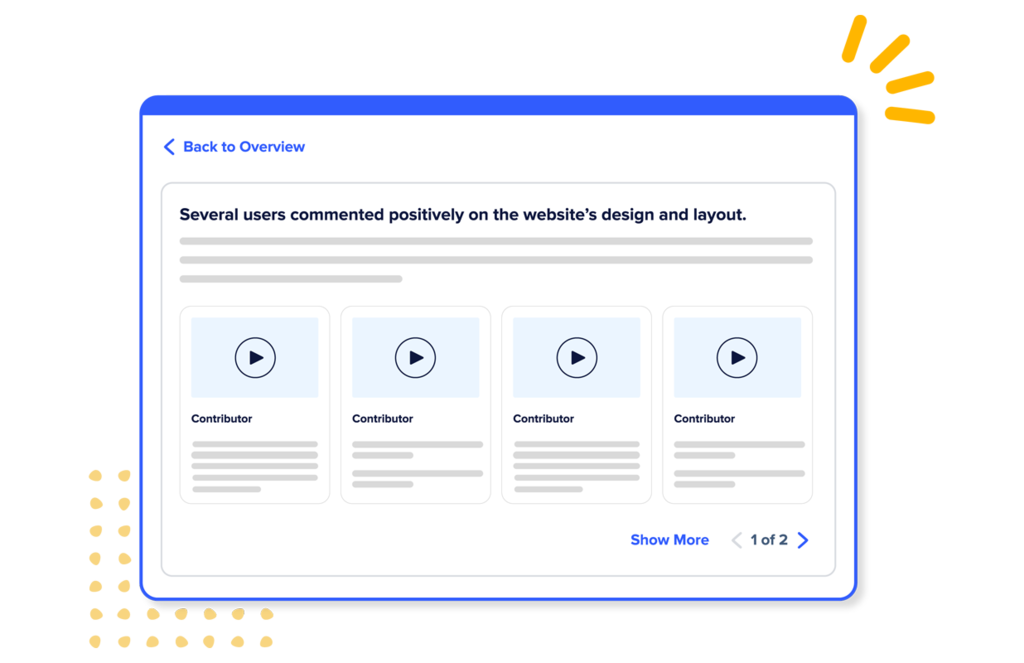
The future of AI and human insights

AI is transforming industries, from automation to predictive analytics. But when it comes to understanding people—their thoughts, behaviors, and experiences—AI alone isn’t enough. The best insights come from AI and human intelligence working together.
At UserTesting, we believe AI should enhance human understanding, not replace it. That’s why we’re integrating AI into our platform to help businesses gather, analyze, and act on customer insights faster and more effectively—without losing the empathy and context that make human feedback so valuable.
AI-powered insights: making research faster and smarter
Today’s businesses face increasing pressure to deliver customer-driven experiences at speed. AI helps solve this challenge by automating time-consuming tasks and surfacing the most relevant insights so teams can focus on making informed decisions.
With AI-powered insights, UserTesting helps teams:
- Speed up analysis: AI processes large volumes of qualitative feedback and identifies key themes in minutes.
- Enhance decision-making: AI summarizes insights so teams can act on customer feedback faster.
- Increase efficiency: AI reduces the manual effort required to analyze responses, freeing up time for deeper strategy.

Why AI needs human intelligence
While AI improves efficiency, it cannot replace human perspective. AI can identify patterns, but true understanding requires human interpretation—empathy, creativity, and the ability to ask the right questions.
UserTesting’s AI works alongside human intelligence by:
- Maintaining context: AI helps surface key insights, but human analysis ensures nothing is misinterpreted.
- Adding nuance: AI identifies trends, but people determine their meaning and impact.
- Prioritizing trust: AI is only as good as its data—our platform ensures insights are reliable, diverse, and actionable.
By combining AI and human expertise, UserTesting enables organizations to make confident decisions rooted in real customer experiences.
How UserTesting’s AI-powered insights drive better experiences
Our AI-powered insights are designed to help teams make smarter decisions faster—without sacrificing depth or accuracy.
With AI-powered insights in the UserTesting platform, you can:
- Get to insights faster: AI highlights key themes from customer feedback in real time.
- Reduce research bottlenecks: Automate repetitive tasks so teams can focus on strategy.
- Gain a competitive edge: Make data-driven decisions quickly, staying ahead of market shifts.

The future of AI in human insight
As AI technology advances, so does its potential to enhance human understanding. Businesses that leverage AI-powered insights alongside human intelligence will be better equipped to navigate evolving customer expectations, create seamless user experiences, and make more informed decisions.
At UserTesting, we believe the future of AI in human insight is about amplifying, not replacing, human perspectives. AI can process vast amounts of qualitative feedback, surface trends, and accelerate analysis, but human intuition, creativity, and empathy remain essential in truly understanding and acting on customer needs.
By combining AI’s efficiency with real human feedback, businesses can:
- Understand customers more deeply: AI uncovers patterns in user behavior, while human insights provide the why behind the data.
- Make data-driven decisions with confidence: AI-powered summaries highlight key themes, helping teams act on feedback faster.
- Deliver better experiences at speed: AI reduces research bottlenecks, enabling businesses to iterate quickly and stay ahead of customer needs.
UserTesting remains committed to pioneering AI innovations that empower teams to gather, analyze, and apply human insights in faster, smarter, and more scalable ways.
As AI continues to evolve, the key to success will be leveraging technology not as a replacement for human insight but as a powerful tool to enhance customer understanding and improve user experiences.
Guide





